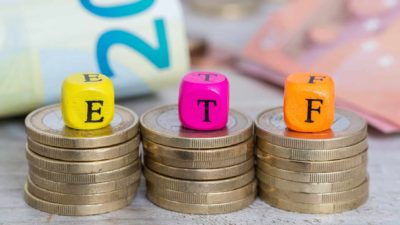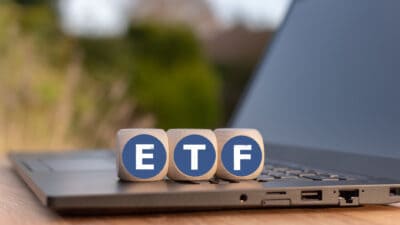ASX exchange-traded funds (ETFs) have changed the game and only continue to garner popularity among older and newer investors alike.
The most common ETFs invest in a basket of shares, usually according to a specific index such as the S&P/ASX 200 Index (ASX: XJO). But they can also provide exposure to other assets, such as bonds, commodities, and currencies.
I'm personally a big advocate of ASX ETFs. Here are a handful of reasons why.
ETFs make life easy
As someone who was once very overwhelmed by the thought of trying to sift through 2,000+ ASX shares, ETFs were the perfect way to dip my toes into the world of investing.
I knew that by sticking with an index-tracking ETF, I'd be taking on less risk than if I were to invest in individual shares (which, at the time, would have been akin to throwing darts in the dark).
It also narrowed down the potential options and considerations when deciding and researching what to invest in.
Once I'd made my decision, all it took were a few clicks in my brokerage app and just like that, I was the proud owner of an ETF.
Plus, unlike investing in ASX shares, I knew I wouldn't have to monitor company news to keep up with the latest developments. I could sleep easy at night knowing my ETF was chugging along in the background, doing whatever it said on the tin.
Diversification
One of the very first lessons I learned in investing was the importance of diversification. As the old adage goes, it's wise not to put all your eggs in one basket.
By design, ETFs help investors do just that. Instead of picking and choosing which shares you think will outperform, you can get exposure to an entire market or sector in one simple investment.
Building a strong core
When it comes to portfolio construction, I follow the 'core and satellite' approach. I think it combines the best of both worlds of passive and active investing.
The basic premise is that the core of a portfolio consists of proven, low-cost, and diversified investments, typically achieving market returns.
After all, history tells us that the share market has always gone up over the long term.
The smaller satellite part of a portfolio is reserved for higher-risk positions that can significantly outperform the market.
ETFs make the core and satellite approach easy.
My core consists of broad-based ETFs, such as the Vanguard Diversified High Growth ETF (ASX: VDHG).
Meanwhile, my satellite positions primarily consist of individual ASX shares, such as Xero Limited (ASX: XRO) and Altium Limited (ASX: ALU).
But ETFs aren't just reserved for the core. A few higher-risk, tactical ETFs, such as the BetaShares Global Cybersecurity ETF (ASX: HACK), have also carved out a spot in the satellite part of my portfolio.
Distribution reinvestment plans
Many ETFs pay out distributions to investors, which are similar to dividends.
Take the BetaShares Australia 200 Index ETF (ASX: A200), for example, which invests in a basket of the largest 200 companies on the ASX.
Many of these companies pay dividends. So, the A200 ETF collects these dividends and passes them on to investors in the form of quarterly distributions.
This form of passive income is great, but I especially like the ability to reinvest these distributions automatically.
This is made possible by distribution reinvestment plans (DRPs), where you can choose to forego the cash payment and instead receive additional units in the ETF. Not all ETFs offer a DRP, but the larger, more established ones usually do.
DRPs can help magnify the wonderful benefits of compound interest over time. And I like that I can invest in the market without having to lift a finger or make a conscious decision.
All this for the price of a coffee?
Simple, index-tracking ETFs should be low-cost, attracting less than 0.20% management fees.
The lowest-cost ASX ETF is currently the Vanguard US Total Market Shares Index ETF (ASX: VTS). At just 0.03%, a $10,000 investment incurs annual fees of only $3… that's less than the price of a coffee!
Even at 0.20%, yearly fees would amount to just $20 based on a $10,000 balance.
This is a sum I'm more than comfortable paying in return for the benefits I've mentioned above.
These fees are also much lower than what you'd pay for a managed fund.
So, which ETF should you invest in?
Not all ETFs are equal, and it's important to know what you're investing in.
Understanding your investment objectives and risk tolerance before deciding where to allocate your money is essential.
Personally, I'm a big fan of low-cost, index-tracking ETFs that make life simple for investors, especially those just starting out.
As I explained recently, I'm also partial to the VDHG ETF, which just so happens to be my very first investment.








